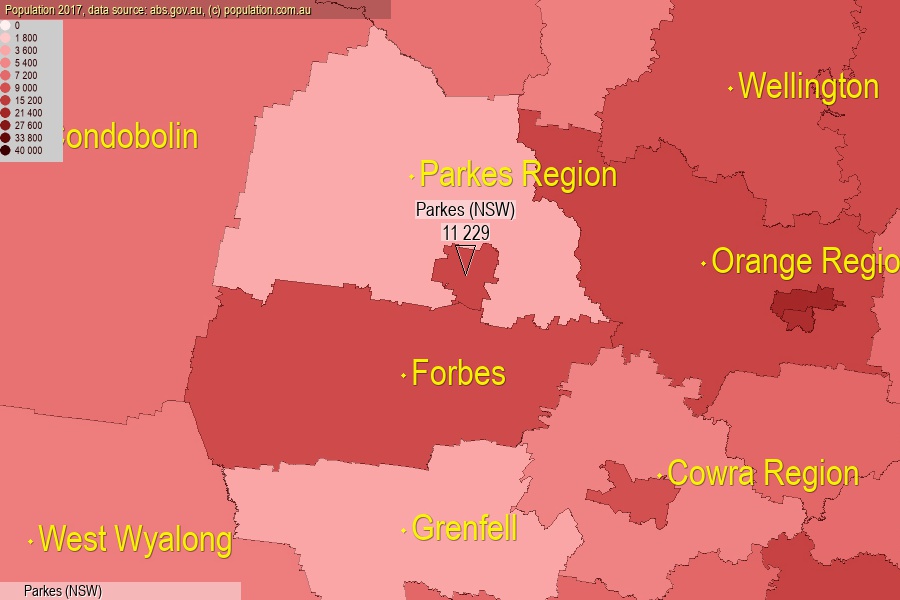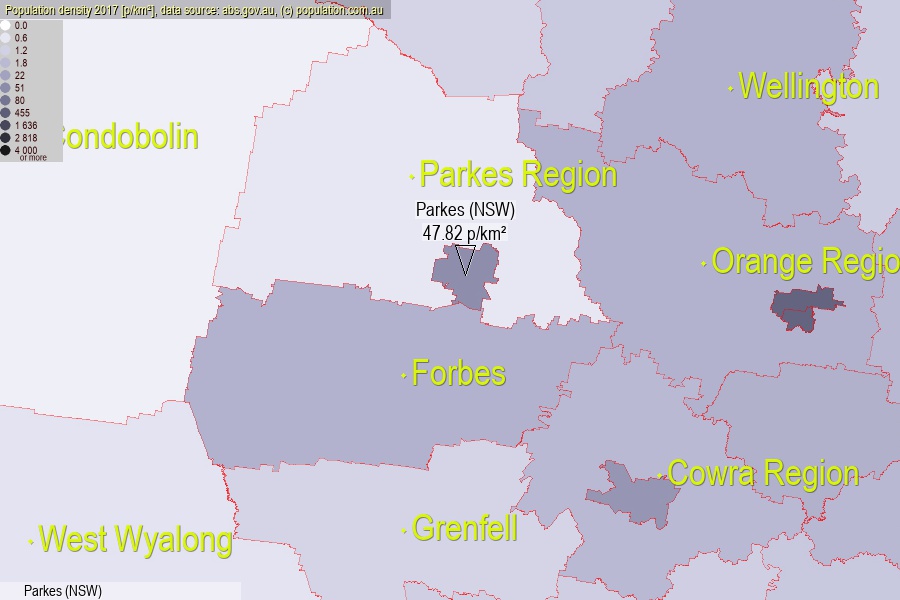 population.com.au
population.com.auLast official estimated population of Parkes (NSW) (as Statistical Area Level 2) was 11 229 people (on 2017-06-30)[2]. This was 0.05% of total Australian population and 0.141% of NSW population. Area of Parkes (NSW) is 234.80 km², in this year population density was 47.82 p/km² . If population growth rate would be same as in period 2016-2017 (-0.2%/yr), Parkes (NSW) population in 2025 would be 11 055. [0]



Click to enlarge. Parkes (NSW) is located in the center of the images.
Population [people], population density [p./km²] and population change [%/year] [2]
View borders » (new window) [4]
[1991-1992] +2.46 %/Yr.
[1992-1993] +1.83 %/Yr.
[1993-1994] +2.62 %/Yr.
[1994-1995] +1.30 %/Yr.
[1995-1996] +1.41 %/Yr.
[1996-1997] -0.38 %/Yr.
[1997-1998] -0.49 %/Yr.
[1998-1999] -0.16 %/Yr.
[1999-2000] -0.42 %/Yr.
[2000-2001] -0.26 %/Yr.
[2001-2002] +0.35 %/Yr.
[2002-2003] -0.19 %/Yr.
[2003-2004] -0.22 %/Yr.
[2004-2005] +0.06 %/Yr.
[2005-2006] +0.37 %/Yr.
[2006-2007] +0.80 %/Yr.
[2007-2008] +0.96 %/Yr.
[2008-2009] +0.46 %/Yr.
[2009-2010] +1.52 %/Yr.
[2010-2011] +0.99 %/Yr.
[2011-2012] -0.11 %/Yr.
[2012-2013] -0.08 %/Yr.
[2013-2014] -0.08 %/Yr.
[2014-2015] -0.21 %/Yr.
[2015-2016] -0.12 %/Yr.
[2016-2017] -0.20 %/Yr.
[0] Calculated with linear interpolation from officially estimated population
[1] Read more about SA2 and Australian Statistical Geography Standard (ASGS) on abs.gov.au
[2] Population data from Australian Bureau of Statistics (Population and density: 2017; change: 2016-2017)
[3] Digital Boundaries: Australian Statistical Geography Standard (ASGS) 2016.
[4] Border coordinates are simplifyed using Ramer-Douglas-Peucker algorithm.